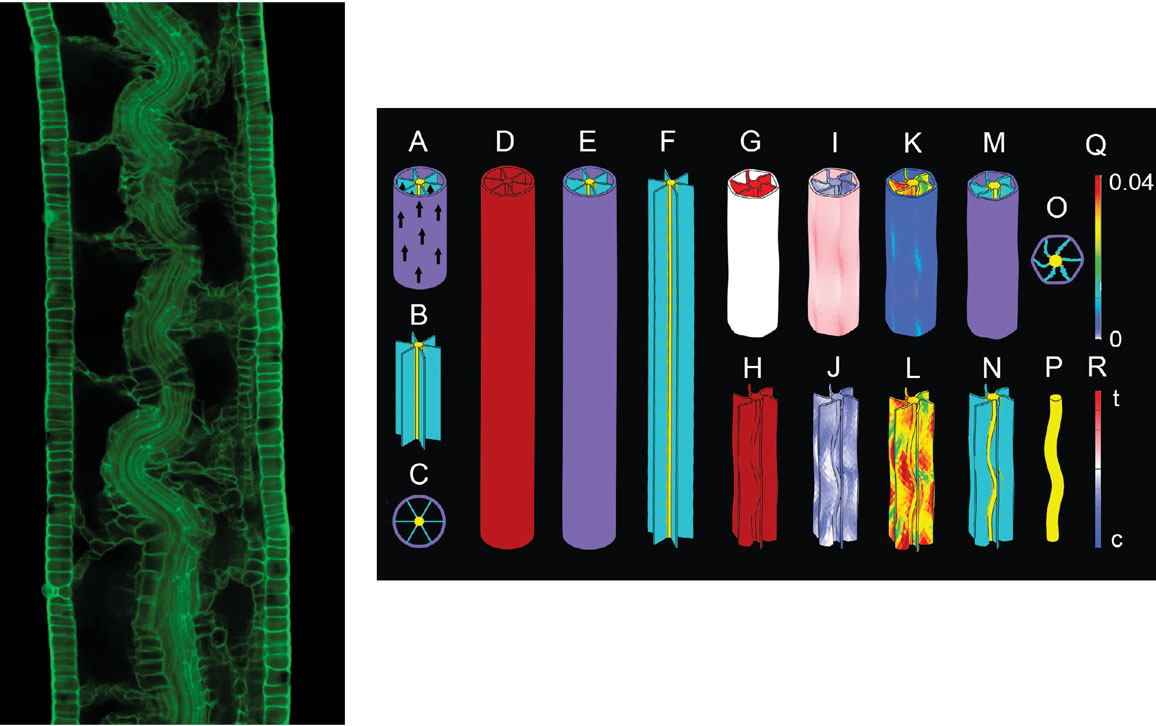Pushing and Pulling in Plants
By Fenella Saunders
Stems use mechanical forces to control growth between their layers of tissues.
Stems use mechanical forces to control growth between their layers of tissues.

Relatively few organisms are a single cell thick, so their layers of cells have to work together to build a functional structure. Genes in different tissue layers are known to influence one another’s activity, and most of the time, that communication is assumed to occur via chemical signaling. But because the layers are in contact, there’s another option: mechanical forces. “We think of a biochemical signal as the analogy of verbal communication: You want to get somebody to do something, you tell them to do it. But tissue layers interacting with each other via pure mechanics is like me grabbing somebody and moving them to where I want to do something,” says Robert Kelly-Bellow, a plant biologist at the John Innes Centre in the United Kingdom.

Images from R. Kelly-Bellow et al., 2023, Science 380:1275; simulation by Richard Kennaway
Click "American Scientist" to access home page
American Scientist Comments and Discussion
To discuss our articles or comment on them, please share them and tag American Scientist on social media platforms. Here are links to our profiles on Twitter, Facebook, and LinkedIn.
If we re-share your post, we will moderate comments/discussion following our comments policy.